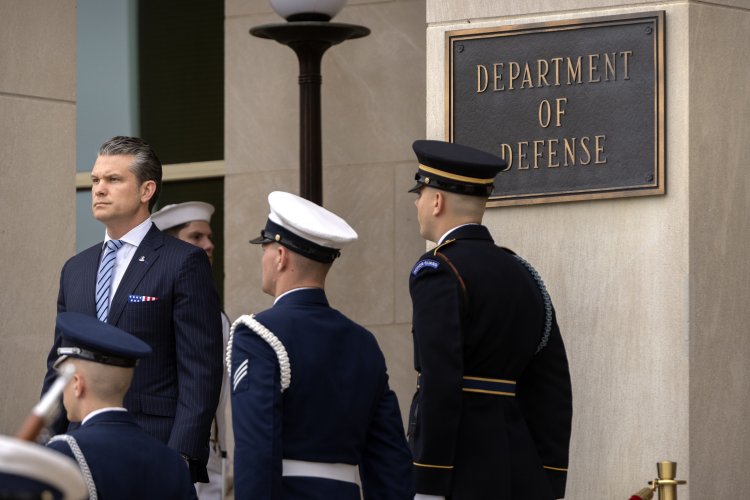Pentagon Ordered by Hegseth to Cut Top Military Ranks
The proposal includes a 20 percent reduction in the number of four-star generals and admirals.

In a memo and accompanying video, Hegseth indicated that the plan includes a 20 percent cut to the number of four-star generals and admirals, as well as a 10 percent reduction among the military’s over 800 generals and admirals. Additionally, he proposed a 20 percent decrease in the ranks of generals within the National Guard.
“This is not a slash and burn exercise,” he stated in the video. “More generals and admirals does not lead to more success.”
Hegseth has expressed a longstanding disdain for top military officials and has already removed Joint Chiefs Chair C. Q. Brown and the Navy’s leading admiral since taking his position.
While the Pentagon has not yet outlined specific details regarding the cuts, potential proposals under consideration include merging the European and Africa commands, both currently overseen by four-star generals, and combining Northern and Southern commands.
Hegseth described the initiative as the “most comprehensive review” since the 1986 Goldwater Nichols Defense Reorganization Act, which enhanced the authority of U.S. commanders worldwide in planning and executing military operations.
Though no specific timeline has been established for the implementation of these changes, Hegseth indicated they will occur in two phases.
The first phase will focus on evaluating the current force and aim for a 20 percent reduction in active-duty four-star general officers and admirals, which could happen fairly soon. The second phase will involve an in-depth review of the Unified Command Plan, a classified document that dictates the global distribution of U.S. forces, resulting in an additional 10 percent cut in general officer and admiral ranks.
Hegseth has labeled this examination of the Unified Command Plan as a “strategic review,” which will lead to more extensive modifications in global combatant commands.
Additionally, the Army plans to reduce commands and offices led by generals by 40 positions, a considerable decrease from the approximately 200 billets currently occupied by those officers, according to a source familiar with the plans.
“Through these measures, we will uphold our position as the most lethal fighting force in the world,” Hegseth noted in the memo, “achieving peace through strength and ensuring greater efficiency, innovation, and preparedness for any challenge that lies ahead.”
Olivia Brown for TROIB News












